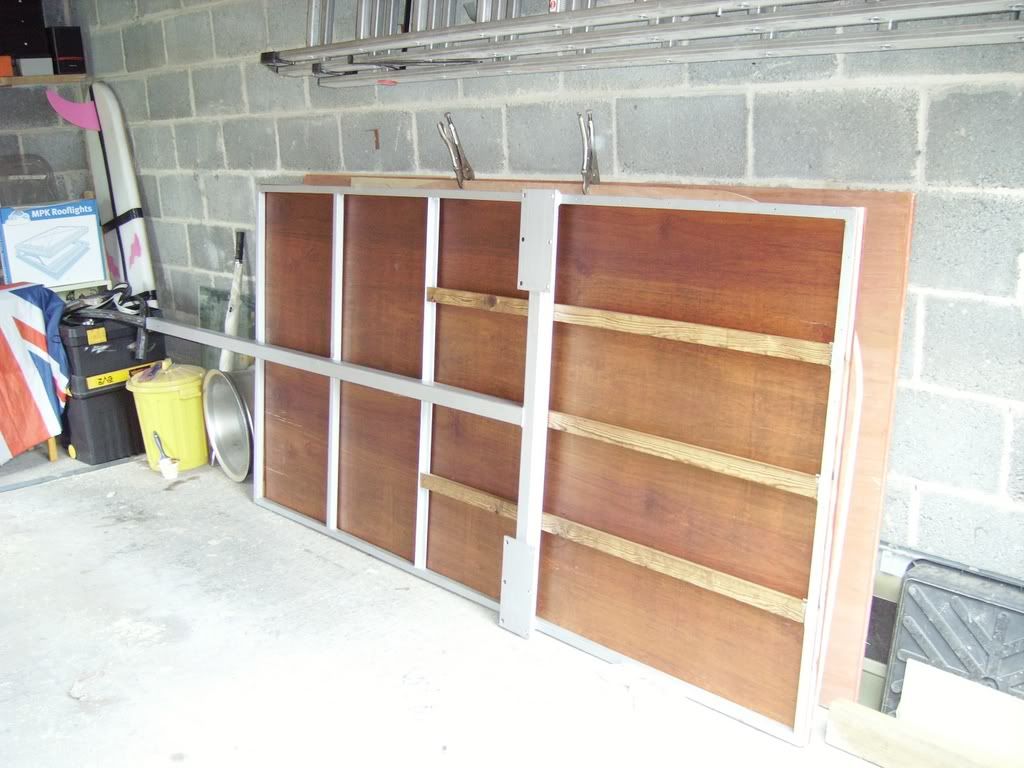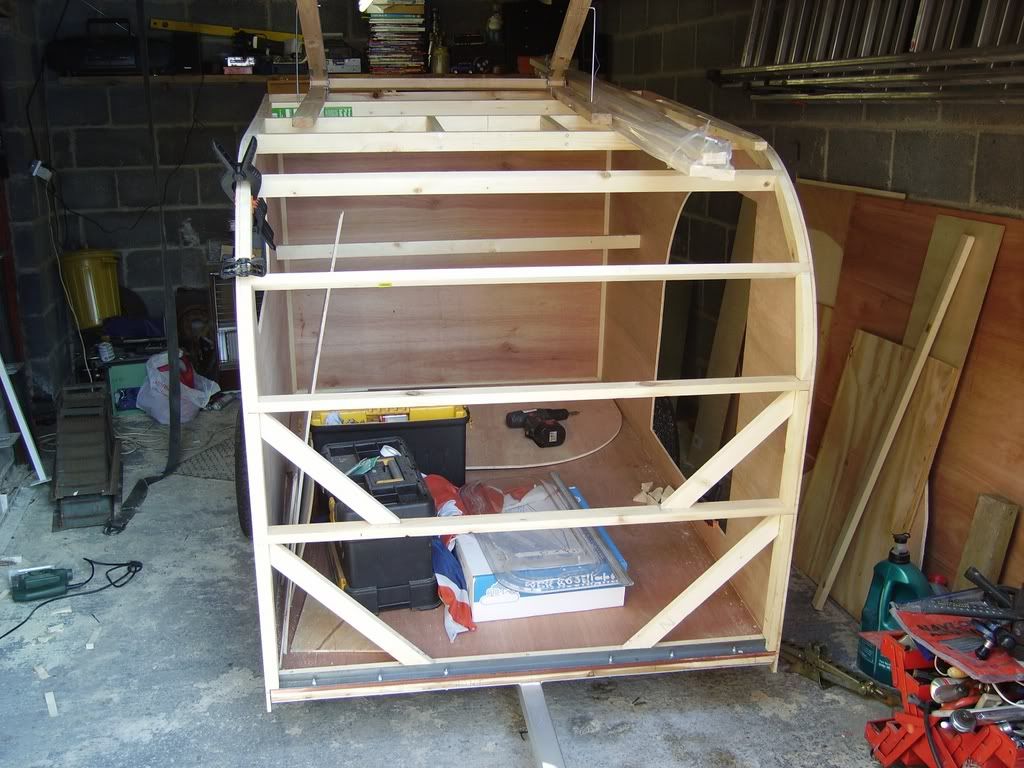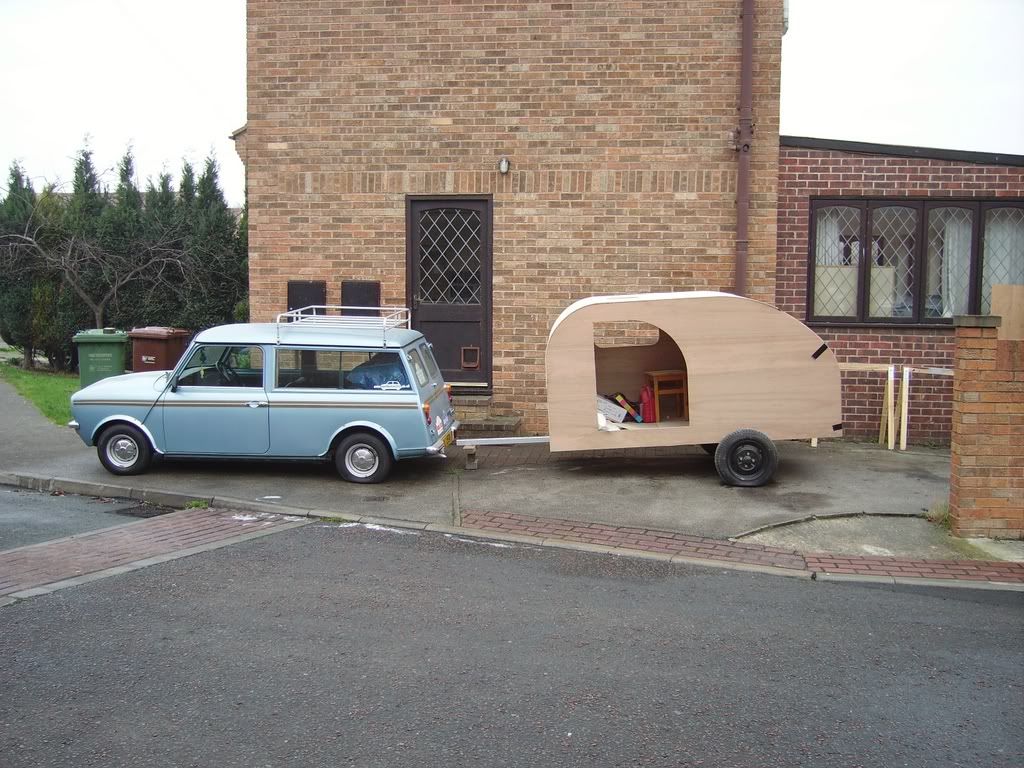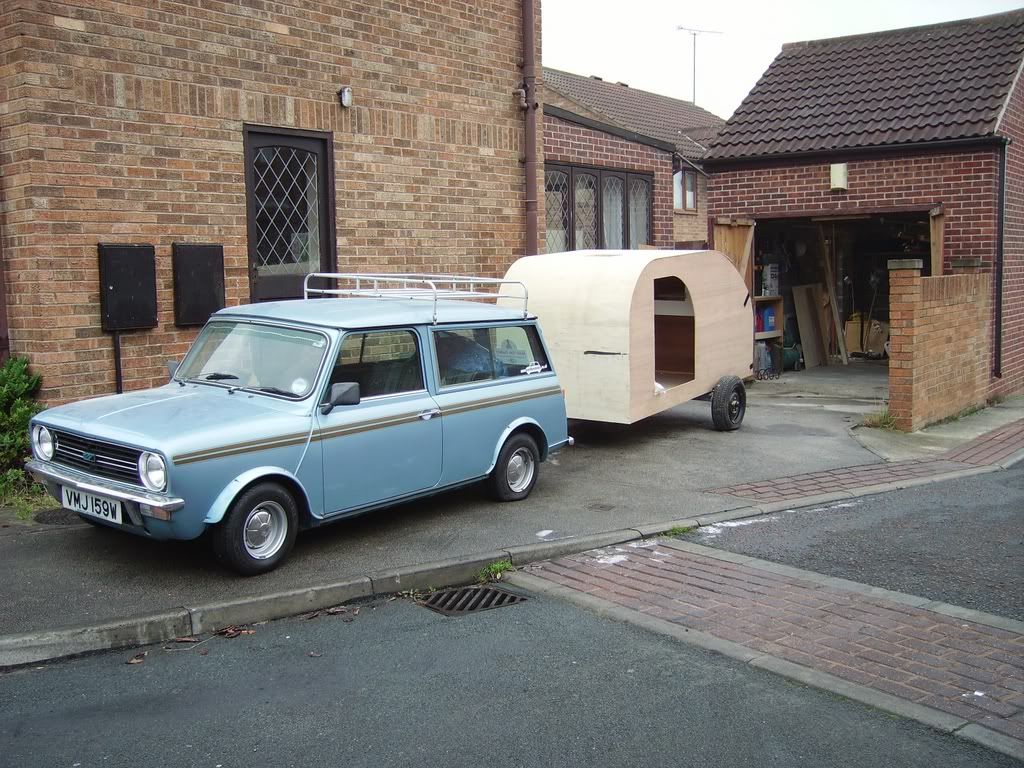Hi,
Mini Renegade wrote:Hi Bernd, welcome to the forum. I lived in Germany for 5 years in the late 1990s when serving in the Army, we were in Fallingbostal, which is half way between Hamburg and Hanover.
I like the lightweight idea, I tried to make mine as light as possible by using 9mm sides which when combined with the cabinets, window frame and door frames is solid.
The only real problem I have encountered is chassis twist when entering through the door, this can be sorted by using corner steadies.
Of course i'm interrested in your design, may you provide some pics please? A twisting chassis is no problem, until the joints show wear or breaking, or the trailer shows a instable ride while towing. But where do you think the twisting comes from? Is the torsion box non-continuous?
Frame:
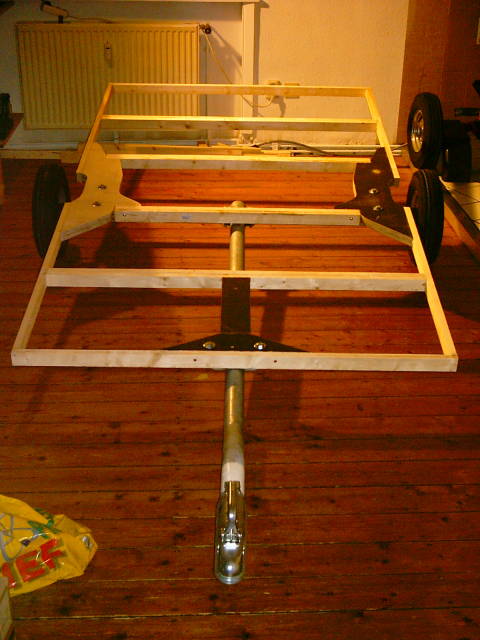
Questions? Comments?
weights are:
axle 50lbs
tongue 22lbs
clampings 6lbs
3 wheels 25.5lbs (now 3, - spare wheel...)
lighting, fenders 7lbs
frame 40lbs
total 151lbs (69kg) now, the rest up to 660lbs (300kg) is for the walls, the roof and bed and ...comfort.
A little built history:
For the crossmembers i decided to glue two pieces of 1*2 timber together as i cancelled the underside covering. It would be too difficult to get a watertight cover on the different hights of the frame parts (ply/timber), so i think it's better to have the frame in free air. Second is, that the TÜV-engineer sees what holds the floor together, and it's easy to inspect for me too. I puzzled two adversatively distorted, knotted battens together to get one straight robust 2*2. That worked out good, was cheap but time consuming. I bought a bundle of 10, length 8feet each, used with almost no waste. The frame is almost precise, despite the workshop conditions. Next time i build a solid flat working platform first... . The glue is PU-MAX from UHU. It has a jelly consistence, is chrystal clear, comes in cartouches and sticks best to skin... . I'm not shure if i like it. Exept the big areas between the plywood parts, where water based glue dries almost never, a D3 PVA glue would have been easier to work with, and it's waterproof too.
Is 1/4 birch ply enough for the floor decking?
I'm not afraid of fexibilities, if it won't break while towing. Insulation will be a layer of XPS on the inside, layed on to allow inspection
How to protect the underside?
Boiled (linseed) oil? I like that stuff, used it in my kitchen on pine ply, even around the sink. Easy to maintain, just wet-sand with that oil, skin friendly... . If dryed out a good base for solvent based paint. I would like to have the underside clean white...
But can i use it for the upper body?
As you see on the pic the axle is right in the middle of the body. I plan plastic boxes as first provisional storage, and "technical modules" of the same size.
One module for example will be 12V battery, charger, 12V outlets for gooseneck lamps, 230v in an out, and the electric fan heater, maybe communication/media/sound. I like to fiddle at home on the workbench. it will be much easier to compress the equipment in a small package, if i can turn the module around, instead of creeping in a build in compartment with the legs hanging in the rain.
Next module is a provisional coffee kitchen, as i cancelled the hatch for the first TÜV-version.
I think about a shower module... porta potti module...

Next tear will have a fully funktional popup bathroom...
Clothing stuff will be in bags, on the mattras while towing, or in a big bag net in the back above the feet.
That modules go to the front, and will be the highest pointload on the floor (to come back to the diameter of the floor)
Greetings, Bernd

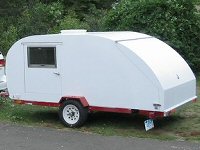

 Next tear will have a fully funktional popup bathroom...
Next tear will have a fully funktional popup bathroom...
 . The technical modules go to the tongue side, the bed is in the back. At the moment (frame only) the hitch weight is 17lbs. The body will be almost balanced, maybe slightly more weight to the front as there the sidewalls are higher than in the back.
. The technical modules go to the tongue side, the bed is in the back. At the moment (frame only) the hitch weight is 17lbs. The body will be almost balanced, maybe slightly more weight to the front as there the sidewalls are higher than in the back.
 . To visit the most of the community we have to built floats to our trailers, or better wings.
. To visit the most of the community we have to built floats to our trailers, or better wings.
